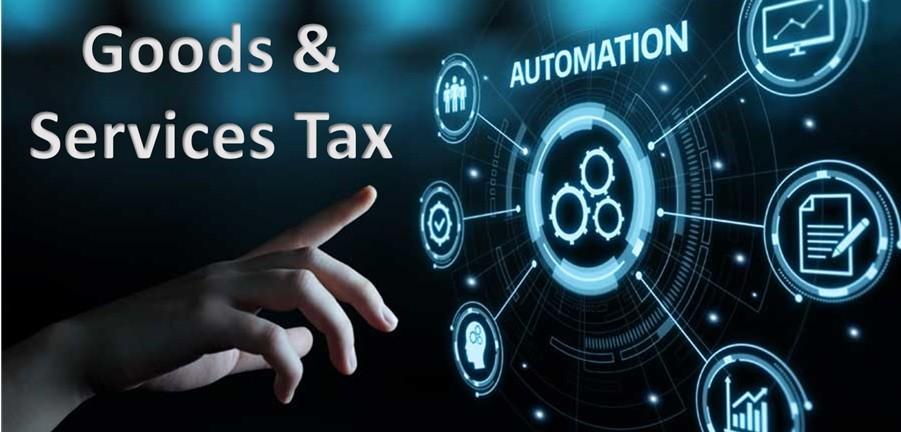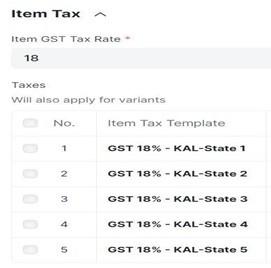Achieving Automation of Goods & Service Tax (GST) in ERPNext
Open-Source Learning with TACTEN: Achieving Automation in Goods & Service Tax(GST) in ERPNext
#erpnext hashtag#erp hashtag#taxcompliance hashtag#TACTEN hashtag#gst hashtag#inhouse hash

Every profitable organization wants a comprehensive ERP that records the right heads of Taxes like IGST, CGST & SGST as per the addresses in transactions. If it is not done rightly then mismatch in taxes and amendments in challans becomes a big headache for Tax Consultants. There should be no doubt on the integrity of the transactions that are getting recorded. But how can they ensure that?
Consider the scenario of a multi-city manufacturing company dealing with around 7000+ SKUs and daily Sales / Purchase invoice count in 100s, with varying tax rates across the SKUs and the multiple taxation requirements to be handled based on the nature of the sales or purchase - (inter-state and intrastate billing, or export / Import billing)
The most important ask from an ERP software would be -
1.It should be easy and fast to carry out all business transactions like - Sales and Purchases
2.And availability of efficient automation for all tax rates to satisfy the conditions that any particular transaction is subjected to. The item level taxes are updated automatically (based on the nature and conditions of the transaction) vs the billing person having to check some separate tax rate sheet manually while raising the bills
Such ERP billing automations are not only beneficial for the billing executive - but the benefit is witnessed by all key business stakeholders.
Ask the company Chartered Accountant, how happy he would be if the data for filing GST is provided as neat and clean as per the book of law!
Ask the accountant how much satisfied he would be if the transactions are automatically picking the right tax heads as per the place of supply!
Ask the owner of a company how much relieved he would be if his output liability of GST is getting correctly calculated considering his 7,000+ SKUs with different Tax brackets amounting to a turnover of more than 100 crore!!
In such a scenario, wrong picking of rates could impact the tax liability to the tune of 6 -10 crores.

ERPNext has its basic framework which allows to record the tax automatically in transactions.
ERPNext has great Tax automation features that come with a bunch of very effective Tax Rules, Tax Categories, etc. along with the capability to configure multiple item level taxes based on different conditions. However, the real pain-point comes when we are dealing with:
1.Complex taxation scenarios
2.Configuring more than 7,000 SKUs with right tax template
3.Configuring 1000s of customers addresses
The beauty is that we are not limited here - we are dealing with a fully open-source product, where we have the freedom to develop what we need. We at TACTENused our in-house engineering team to develop custom features which take care of the different #Taxation needs of businesses dealing with multiple companies in an ERP. In a recent solution, we at TACTEN configured and customized #ERPNext with its unique approach that addressed these pain-points and gave the Client confidence by eliminating the error of wrong transactions and hence providing assured data integrity.
The Implementation Steps
Step-1 – Configuring Taxes at Item Level
There were more than 7,000 items against which it was necessary to tag the correct Tax Category. We started with configuring items with an appropriate tax bracket in the Item Master. Only after a particular Tax Rate was selected, the system would automatically select the respective accounts of Taxes for different companies.

Whenever a transaction happens, it will automatically pick the correct tax account in the company.
Step-2 – Configuring Customer Masters Addresses of the customer and supplier were considered in order to decide on the place for Supply of Goods. For customers that did not need to apply Taxes on any transactions, the solution had a button in Address Masters. This ensured that although the customer was a registered taxpayer, if the address selected is attracting nil tax(Exports), the check box at address level will work accordingly.
Step-3 – Enforcing Billing and Shipping Address Master Correctness With more than 10,000 customer address databases, it was a necessity to keep the data clean, true and complete for the success of automation. A validation at transaction level that checks the validity of correct and complete GST State code helped to make sure that correct Tax heads like IGST, CGST & SGST were getting accounted.
These were some of the hacks that were custom developed by TACTEN to successfully implement automation of Taxation in the company having an estimated turnover of more than 100 Crore. TACTEN addressed the above pain points by developing a fully automated Tax selection mechanism.
This solution resulted in:
1.Zero manual errors in Taxation for transactions
2.Generating Clean and Clear report for filing and compliance
3.More integrity in transactions
4.Savings due to zero manual data entry errors
5.Tax Planning becomes easy
Therefore, each stakeholder in the ERP value chain is a winner, with this neat functionality to ensure integrity of transactional data that comes into the ERP.
Atul-Kuruvilla
Github: pythonpen
No comments yet. Login to start a new discussion Start a new discussion